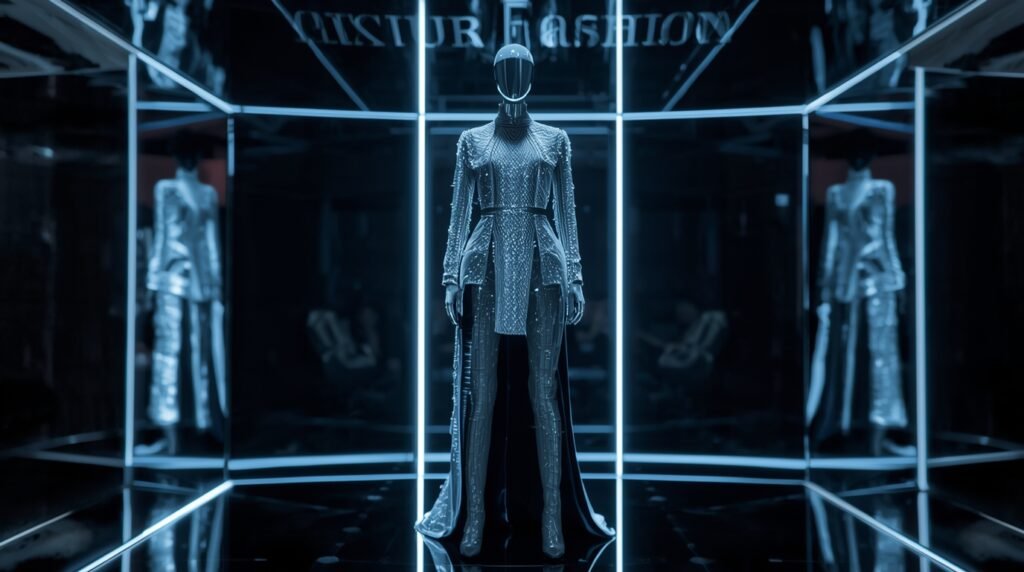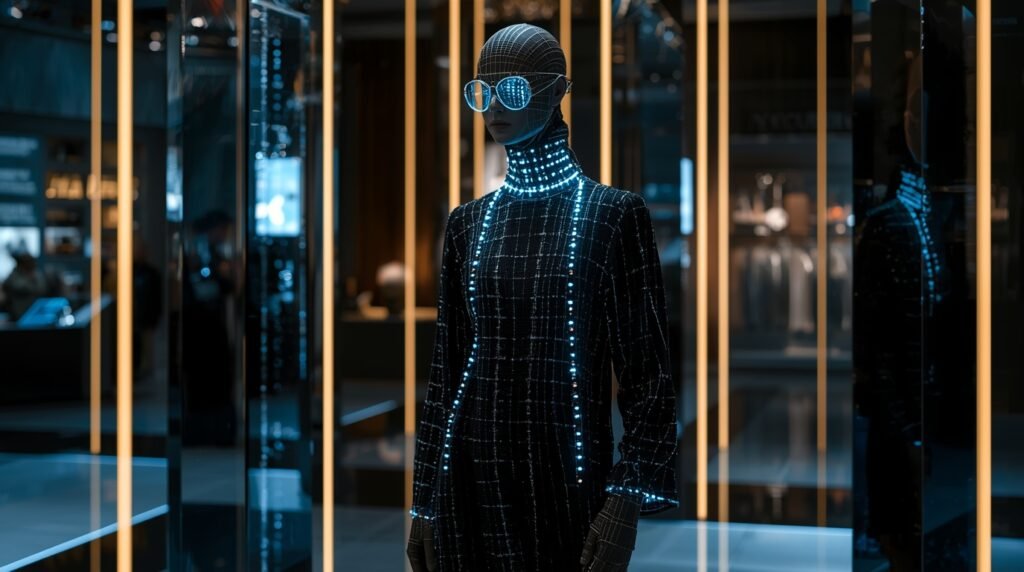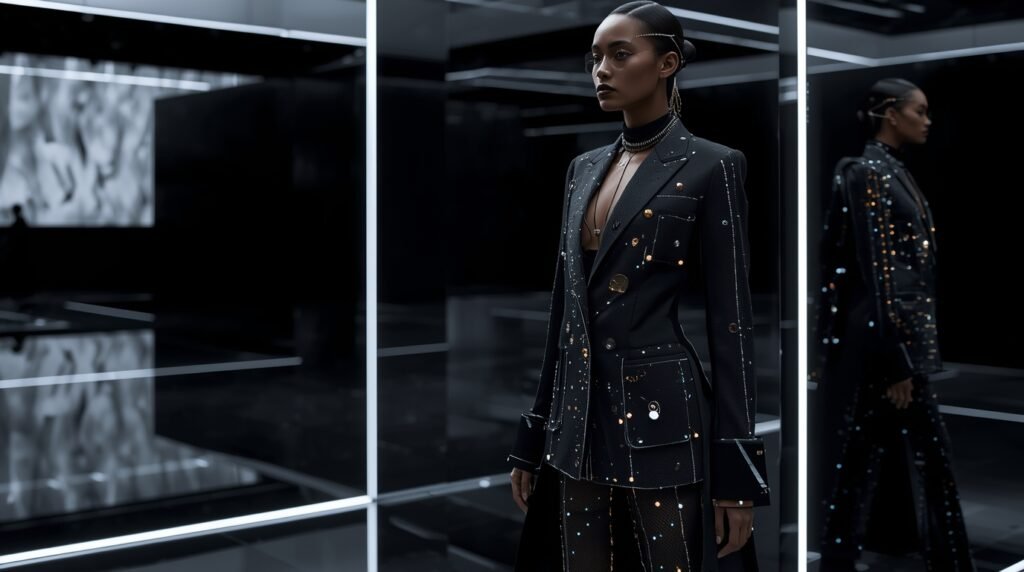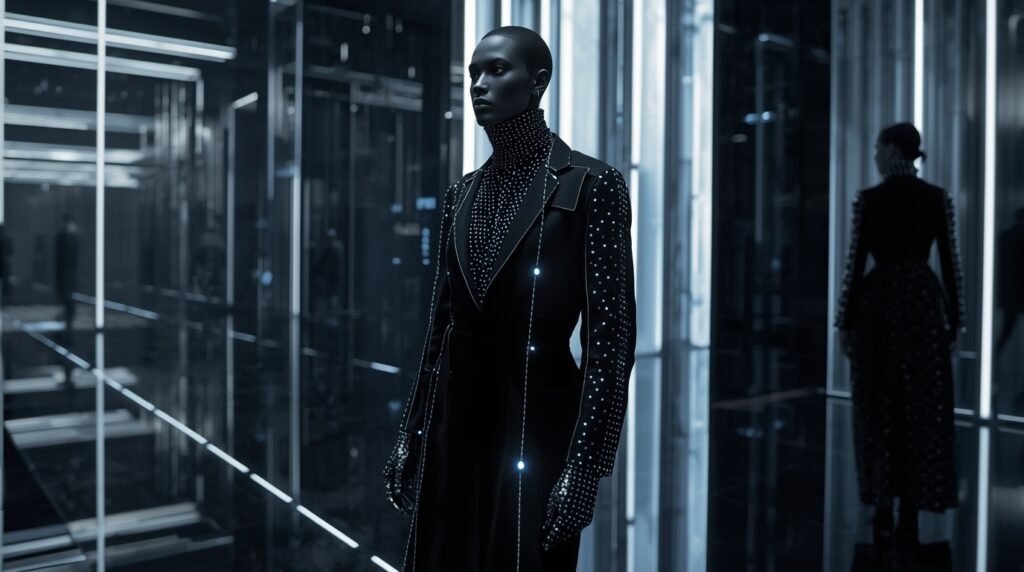In recent years, the intersection of luxury fashion and technology has sparked significant interest and innovation. As consumers increasingly seek a seamless blend of style and cutting-edge technology, the fashion industry is undergoing a major transformation. From high-tech fabrics to AI-driven design, the fusion of luxury fashion and technology is reshaping how we think about style, comfort, and sustainability. But what does this mean for the future of fashion?

The Evolution of Luxury Fashion
Luxury fashion has always been synonymous with elegance, exclusivity, and craftsmanship. Brands like Louis Vuitton, Gucci, and Prada have set the bar for quality and innovation. However, the digital age has brought forth new challenges and opportunities for these established names. With technology advancing at a rapid pace, luxury fashion houses are embracing new tools to stay ahead of the curve.
The integration of technology into fashion allows for the creation of unique, one-of-a-kind designs that appeal to the modern consumer. For example, augmented reality (AR) is becoming an essential part of the shopping experience. Consumers can now use their smartphones to try on clothes virtually, creating a personalized shopping journey without stepping foot in a store. This technology enhances convenience while maintaining the luxury brand experience.
Moreover, artificial intelligence (AI) is playing a vital role in predicting trends, optimizing designs, and even crafting personalized clothing suggestions based on individual preferences. AI’s ability to analyze vast amounts of data allows designers to understand consumer behavior and preferences, enabling them to create products that are both desirable and innovative.

Cutting-Edge Materials and Fabrics
The role of technology in luxury fashion is not limited to design and retail. Technological advancements have also led to the creation of innovative materials that blend fashion with functionality. For instance, smart fabrics are revolutionizing the clothing industry by offering features such as temperature regulation, moisture-wicking properties, and even health-monitoring capabilities.
One example of this is the incorporation of nanotechnology in fabrics. Luxury brands are experimenting with fabrics that can change color based on the surrounding environment or the wearer’s body temperature. These fabrics not only provide a visually stunning experience but also offer practical benefits, such as improved comfort and durability.
In addition to smart fabrics, sustainable materials are also gaining traction. As sustainability becomes a central focus in the fashion industry, many luxury brands are turning to eco-friendly alternatives. The use of biodegradable materials, recycled fibers, and low-impact dyes is becoming more common, reducing the fashion industry’s carbon footprint while maintaining its high standards of quality and luxury.
The Role of Artificial Intelligence in Fashion Design
AI is transforming the design process in the fashion industry. By analyzing data from social media, online reviews, and consumer preferences, AI can identify trends before they become mainstream. This predictive capability allows designers to create collections that resonate with consumers’ tastes and needs.
Additionally, AI tools are being used to assist designers in their creative process. AI-driven software can generate design concepts, suggest color schemes, and even optimize garment patterns for production. This not only speeds up the design process but also reduces waste by improving the efficiency of fabric usage.
Furthermore, AI is enhancing personalization in luxury fashion & technology. With the help of machine learning, brands can now offer tailored experiences, such as customized clothing suggestions, that cater to each customer’s unique style and preferences. As a result, the fashion industry is becoming more consumer-centric than ever before.

Virtual Fashion and the Metaverse
The concept of virtual fashion is gaining momentum, especially with the rise of the metaverse. Digital fashion, which involves creating virtual garments for avatars, is becoming increasingly popular. This trend is driven by the growing interest in virtual worlds, where individuals can express themselves through digital avatars in social spaces or gaming environments.
Luxury fashion brands have begun to experiment with virtual clothing, collaborating with gaming companies and metaverse platforms to create exclusive virtual collections. These virtual garments offer a new form of luxury that is not confined by physical limitations, opening up opportunities for greater creativity and customization.
Moreover, digital fashion offers sustainability benefits by reducing the need for physical production and transportation. Consumers can buy, wear, and trade virtual clothes without any environmental impact. As the metaverse continues to evolve, we can expect to see more luxury brands embracing this digital frontier.
The Impact of AI on Fashion Marketing
AI is also playing a significant role in how luxury brands market their products. Through sophisticated data analysis, AI can help brands understand consumer behavior, predict trends, and personalize marketing strategies. For instance, AI can create targeted ad campaigns based on an individual’s browsing history and social media activity, ensuring that the content resonates with the right audience.
In addition, AI-powered chatbots are becoming a common tool in luxury fashion e-commerce. These chatbots can assist customers in real time, answering questions, providing personalized recommendations, and even completing transactions. By enhancing the customer service experience, AI is helping luxury brands build stronger relationships with their customers.
Luxury Fashion and Sustainability
The fusion of luxury fashion and technology is also driving sustainability efforts. As consumers become more environmentally conscious, luxury brands are under increasing pressure to reduce their impact on the planet. Technology is playing a key role in this transformation by providing innovative solutions to traditional fashion industry challenges.
For example, 3D printing technology allows for the creation of intricate designs without the need for large-scale manufacturing. This method not only reduces waste but also allows for greater precision in production. Additionally, AI can be used to optimize supply chains, reducing the amount of excess inventory and ensuring that products are made only when needed.
Furthermore, blockchain technology is being used to increase transparency in the fashion supply chain. By tracking the journey of a product from its origin to its final destination, blockchain ensures that luxury fashion brands can prove their commitment to ethical sourcing and sustainability.

Challenges and Opportunities in the Intersection of Fashion and Technology
While the fusion of fashion and technology offers numerous opportunities, it also presents challenges. One of the biggest hurdles is ensuring that technology does not overshadow the artistry and craftsmanship that defines luxury fashion. As AI and other technologies become more integrated into the design process, there is a risk that mass production could replace the traditional bespoke approach that many luxury brands are known for.
Another challenge is the cost. Implementing cutting-edge technologies such as AI, smart fabrics, and 3D printing can be expensive. For smaller luxury brands, this may present a barrier to entry. However, as technology continues to advance and become more affordable, these innovations will likely become accessible to a broader range of brands.
Conclusion
The marriage of luxury fashion and technology is creating an exciting new frontier for the fashion industry. From AI-powered design tools to sustainable fabrics and virtual fashion, the future of fashion looks both stylish and innovative. As technology continues to evolve, we can expect to see more groundbreaking advancements that will shape the way we dress, shop, and experience fashion. The combination of luxury and technology is not just about creating beautiful garments—it’s about redefining the fashion industry for a new generation of consumers.
